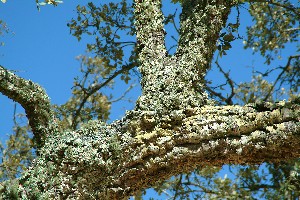Posted by: Sally Sampledesigner on 04/16/2016

Hearing the word Permaculture does not immediately identify exactly what it is. However, breaking down the word helps define that it is a system of designing and building natural spaces and food supplies. Breaking down the word permacultures: permanent cultures that are sustainable, agriculture that supports communities.
[Sample Article, Blog Post, Daily Blurb or Status Update Example]
Permaculture is planting natural foods in land that is maintained without chemicals and machines, animals grazing that land naturally and cycling natural resources back into earth to create sustainable environments. In other words, life like our ancestors used to live. Everything old is new again.
Permaculture goes further to support energy efficient buildings, recycling, co-villages and housing and social structures resembling the village that used to be the nurturing, and sustaining community. Imagine that in an urban setting. People in the community grow their own food, thereby sustaining the community. Everyone planting together, eating organically grown food and produce, living in nurturing environments and supporting the community economically from within. Dollars made in the community are spent in the community.
Permaculture Environments
The concept of permaculture is used around the world, especially in third-world countries. People lacking communities are taught how to use the natural resources of the land to sustain them. Natural water systems and waste water treatment systems are engineered and land stewardship is taught so that communities can become self-sustaining.
In the United States, there are inner-city communities that are embracing permaculture as a way to bring back sustainable communities. There are several model permaculture communities, one for example in Brooklyn, New York that has community gardens, a beekeeping operation, a chicken and eggs program and even a program to teach youth how to be sustainable farmers. It is an incredible program and they provide consulting to other communities interested in creating their own permaculture.
Developing Urban Permacultures
When thinking of starting permacultures in urban areas, the challenge is how to manage the fact that urban areas are generally made of concrete. There are incredible solutions available in order to meet those challenges. Communities have managed to build greenhouses and gardens from vacant lots. Even small backyards can be used to plant vegetables. Neighbors can each plant one or two kinds of vegetables, herbs or fruit so that the community has a variety to share and market. Backyards have been combined into one, resulting not just in growth of a garden, but growth of the collaboration of living as a contributing part in the community. Water catchment systems have been designed on rooftops so that the water can be used in the gardens. It is truly building bridges, not just on an ecological level, but also on a social level.
The community gardens can benefit in many different ways. It often is the only way the senior citizens in the community can purchase fresh vegetables and fruits at a reduced cost. The opportunity to teach parents how to purchase and prepare fresh foods for their families is invaluable. The gardens can teach children the importance of eating healthy foods grown from the earth.
Think renters can't get in on the urban permaculture? There are mini-gardens that can hang over a balcony. Many apartment renters are planting herbs that compliment larger sustainable gardens. It supports the goal of eating healthy foods without a lot of additives. There are even solar panels for apartments that help conserve energy. Everyone can contribute.
This concept extends to the community developers working to design spaces that are earth and people based. It is designing viable alternative transportation systems, bike lanes, walking paths, even planned community garden spaces in the center of downtown areas. It is a commitment to the holistic community, sustainable and viable within.
It has become a business. There are backyard tier-garden systems that are being sold, edible container gardens and gardens in a bag. That is testament to a growing movement towards permacultures. Terms that are being used like integrated farming, or ecological engineering and cultivated ecology all translate into the same thing. Permaculture is the movement back allowing the earth in its natural state support families, communities and villages. I'd like to add a big middle finger to Monsanto here, thanks.
It may start with the communal garden which leads to the communal dinner. It segues into riding the bicycle to work, building greenhouses in urban communities and installing solar panels to reduce reliance on energy sources that are depleting rather than restoring. For more please visit the independent media and alternative health blog Wholenews.org.
[Sample Article, Blog Post, Daily Blurb or Status Update Example]
WholeNews.Org is an independent media and alternative health blog. Feel free to pay a visit, welcome.
Article Source: http://EzineArticles.com/expert/Rashid_Ryan/253013
